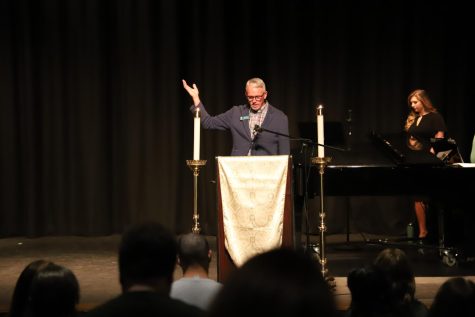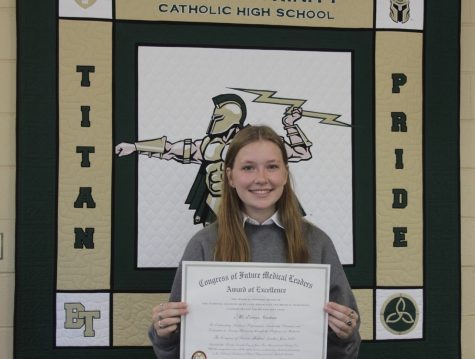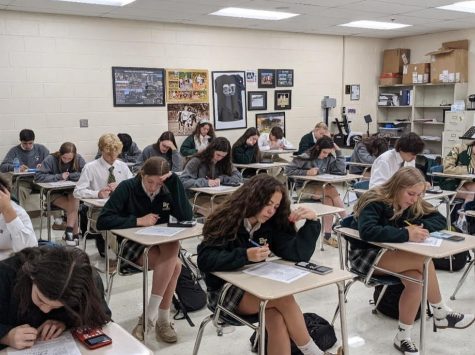How to Be an Anti-Racist
How Language Can Become Too Powerful to Merely Pick Apart

Over the summer, Mr. O’Connor’s AP Language and Composition classes were assigned a book entitled How to Be an Anti-Racist by Ibram X. Kendi for their summer reading and annotations. This a book that would, shortly after, go on to sell more than three hundred thousand copies in the months of May and June, alone. Now, this sales spike was not due entirely to O’Connor’s summer assignment, rather, the 3900.66% increase, according to Forbes.com, is believed to be a direct correlation to the tragic death of George Floyd, an incident that caused international protests, a national discussion, and many more interpersonal conversations about race. O’Connor never predicted this would become the outcome, noting, “it became a more powerful read than even [he] anticipated when [he] chose the book.” He goes on to admit that “the timing was not really intentional on [his] part, when [he] chose the book, strangely, [he] did not think that it was going to become the sensational experience it that became for some people.”
Typically, when choosing a book for AP Lang, O’Connor attempts to locate “a book that’s relevant to [his] students’ lives and that incorporates a particular style of writing.” While the more rigid criteria are “a writer that’s making claims, presenting evidence, and providing commentary,” he also attempts “to encourage [his] students to read books…that challenge them to consider other peoples’ points of view.” He warns that “AP Lang is the type of class that forces us to look at points of view and positions that we may not necessarily agree with or that we may not necessarily adopt ourselves, but nevertheless, we have to consider that counter-argument to formulate a well-informed and thoughtful argument of our own.”
Appreciating the nature of this class is crucial to understanding why the seemingly “perfect timing” of this text serves to the detriment of a rhetorical discussion. O’Connor maintains that “if we had had a much different summer before returning in the fall and if [his] students had read and annotated How to Be an Anti-Racist, and we had not had such a socially and politically and personally tumultuous experience as that summer was for many people, the students would’ve probably been more comfortable and more open about talking about the book.” Unfortunately, he fears that it was “almost too prescient”, given that “a lot of us were still kind of processing what we had all witnessed and observed over the summer months.” He was forced to wonder “whether this was going to be a lesson about language or a lesson about something else that falls outside of the purview of AP Lang.”
He is, however, “glad that it was very relevant to what was going on,” and feels as though it “became a book much more about American history and morality and the way that we create our society and the priorities we establish for ourselves as a people and a nation.” O’Connor feared that bringing up the “book and only concentrating on Kendi’s use of language…would almost have been a very contrived and superficial treatment of the text.” He instead opted to allow his students time to really process and internalize the content of Kendi’s work and the larger implications it held on what was playing out throughout our country in real-time; he went on to say, “if I had started talking about How To Be An Anti-Racist the first or second day of class in the fall, there was no way that we were going to turn that book, at that point, into a lesson about argumentation and writing, it had become more than that.”
“Even since the George Floyd incident, it’s not like our society has reached anything resembling some kind of normality. I mean we have the COVID experience going on; we have what happened at the nation’s capital; we have a former president that has really pushed the boundaries of national leadership and democratic leadership in this country, so, unfortunately, I have not really found a space where I thought that as a teacher, as an English teacher, I could take Kendi’s work and fit it into some kind of study of language, argumentation, and rhetorical analysis in a way that it would not have diminished the importance of the book.”
Current AP Lang student, Carmen Sotunde agrees, saying “it would’ve gone over their heads.” However, fellow AP Lang students, Marisa Inoa and Elizabeth Shipley believe that holding discussions about the book in the early part of the semester would have prolonged the conservation, and in-class discussions could have yielded more meaningful conclusions for students with less concrete perceptions of the text.
As Kendi offers a lesson in how language can be used so masterfully, its message becomes too powerful to simply parse for rhetoric, O’Connor provides a perfect example of timeliness and audience awareness, two important ordinances of AP Lang. For all of those eager to run out and grab this book off the shelves, O’Connor warns, “it’s the kind of book that you have to be ready to read, even under normal circumstances. it’s the kind of book that you have to be mentally and emotionally and psychologically ready for, and the fact that we have had the last 8 to 10 months that we have had in our nation, I think it has made being ready for Kendi’s message even that much more challenging or difficult for some people.”

Javier Mina is currently in the twelfth grade and the co-editor-in-chief of The Titan Times. Javier is also the President and a founding member of the...





